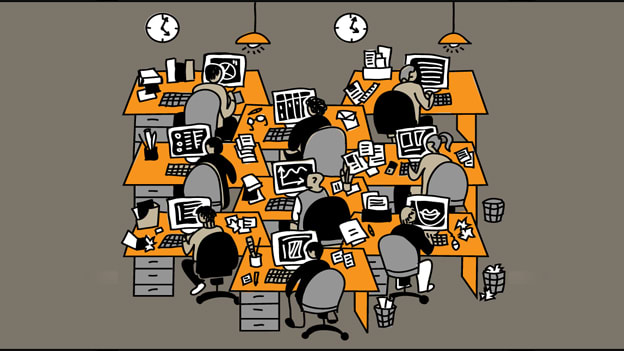Working in an open office is distracting: Study

The idea that open workplaces, with minimal enclosed spaces, boost collaboration, communication and peer learning have found many takers in the last two decades. Now that segregated cubicles are increasingly no longer the first choice for new office designs, the concept of open office spaces has also started ruffling quite a few feathers. If the findings of a recent survey by Unispace, a business interior design firm, are anything to go by, open offices are hampering employee productivity and concentration. By collating the responses of more than 11,000 workers in a global survey on working practices and workplace design, the report found that noise and distractions in open workspaces are disrupting concentration and focus. So if you too have been blaming your office environment for your lack of focus and efficiency, you probably aren’t alone. The important findings of the whitepaper, titled, ‘Form the following function: Is the design industry creating offices that work for everyone?’ are as follows:
- Respondents of the survey named noise (15%) as the biggest factor that led to inefficiency during the working hours.
- This figure was at 11% in the 2016 edition, indicating that the issue of noise in workplaces has worsened in the last year.
- Other causes of inefficiency were: lack of quiet areas (13%), lack of privacy (9%) and temperature and air quality (7%).
- Respondents reported that they spent nearly 60% of the time in the day for their individual tasks, 25% towards collaboration, 7% for socializing and another 7% for learning.
- An analysis of the responses indicated that tasks like filing, creative work, and training/learning take up more time during the day, as compared to collaborative tasks like group meetings, presentations, and conferences.
- Despite the number of distractions, open workspaces are the places where employees spent the bigger part of their working time (31%).
- Cubicles (18%), Conference/Meeting Rooms (14%) and Private Offices (13%) were the other locations where work was done.
Simon Pole, Global Director, Design, Unispace, explains, “... The workplace has changed radically in the last few years, but it may have gone too far now. Collaboration is obviously a central tenet of many modern spaces and in this environment, creating a fusion of ideas and socialization is key. But for the majority of everyday business tasks, workers need space for focus, calm and solitude... Increased noise, a lack of privacy and quiet areas consistently show up as the top three employee complaints in open environments. This is particularly problematic as most employees’ report that they engage in focus work more than any other work mode.”
The building evidence against the perceived benefits of shared working places reiterates that different roles require different environments. Moving from the cubicle culture to shared workspaces in order to simply promote collaboration and communication, without taking into account the pitfalls that come along, is bound to create unforeseen challenges like the ones highlighted in the study. Natasha Bonugli, Regional Principal, Design, Unispace, poses a relevant question, “The top issue for workers that lead to distraction is caused by noise or interruption when they are trying to concentrate... Designers have to question why the sector is devoting so much space to collaboration when most of the working day is given over to tasks that require focus and concentration.”
The study and its results are of great significance to employers, leaders and HR professionals. They caution organizations against adopting such concepts and office space planning strategies in the hope that they lead to better performance and culture. At best, a shared workplace might develop a great sense of camaraderie, and at worst, might come in the way of employees undertaking individual responsibilities. Open and shared workplaces should not be considered as a means to achieve a culture of collaboration and sharing, and should definitely not be constructed simply “because that’s how it’s done at Google.” Albert De Plazaola, Global Principal Strategy, Unispace, sums up the essence of the paper best, “Open, collaborative work environments promised us increased employee performance, higher levels of productivity, happier employees and happier CFOs — as these environments were typically more efficient... (But) We need to think critically around how and if the latest design trends and fashions can elevate the experience of employees. For example, progressive workplace designs for social media or tech companies may not be appropriate or culturally suitable for professional services firms. Similarly, napping pods and zen lounges may do wonders for overworked software engineers, but would miss the mark entirely if placed in the office of a conservative management consulting firm.”
You can view the complete study here
------------------------------------------------------------------------
Sources:














